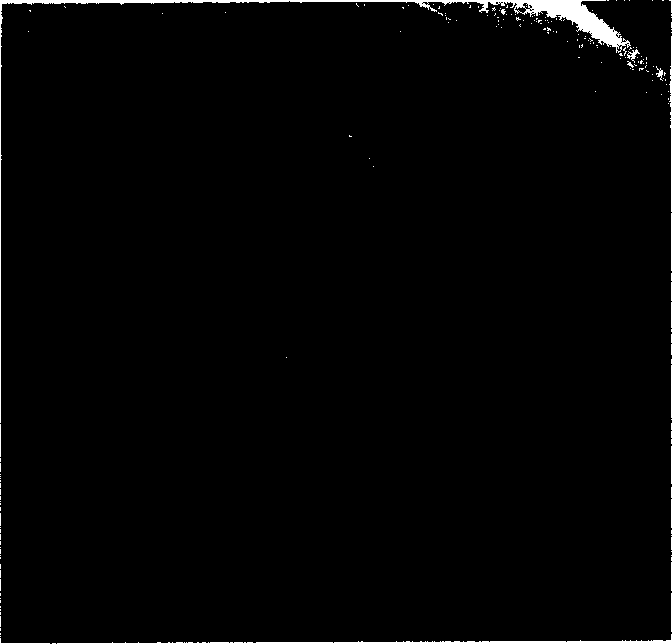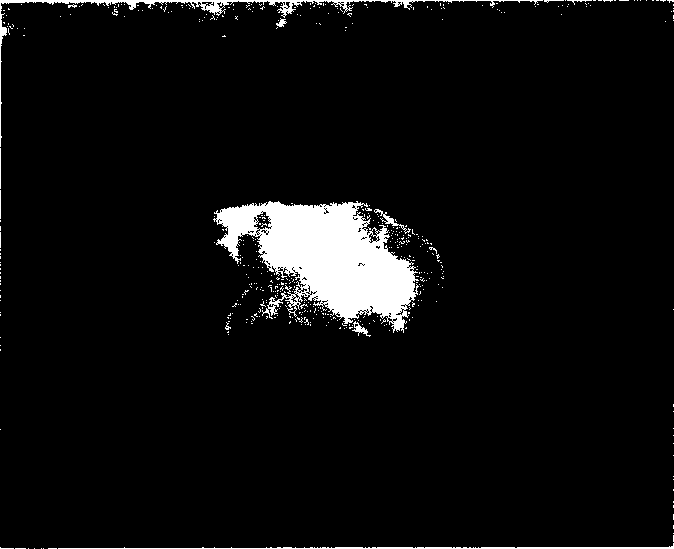Method for separating antibiotic peptide and separated antibiotic peptide
A technology of antimicrobial peptides and leading peptides, applied in chemical instruments and methods, peptides, hybrid peptides, etc., can solve the problems of reduced antibiotic efficacy, increased bacterial resistance, and ineffectiveness, achieving efficient separation and good bioaccessibility , strong antibacterial activity
- Summary
- Abstract
- Description
- Claims
- Application Information
AI Technical Summary
Problems solved by technology
Method used
Image
Examples
Embodiment 1
[0028] (1) Construct the fusion DNA fragment of yeast α mating factor leader peptide and random peptide for secretory expression of random peptide. The two primers are GCGAATTCAAAAATGAGATTTCCTTCAA. CGTCTAGATCA(N) 9 TCTTTTCTCGAGAGAT. Amplified with PfuDNA polymerase with high-fidelity activity. The amount of amplified template used was 50ng of plasmid pPICZαA (product of Invitrogen, containing yeast α mating factor leader peptide DNA sequence) per 1ml of PCR reaction solution. The amplification conditions are: pre-denaturation at 94°C for 5 minutes; 15 cycles of 30 seconds at 94°C, 30 seconds at 50°C, and 20 seconds at 72°C; fill-in at 72°C for 5 minutes. The amplified product was precipitated with 1 / 10 2.5M NaAc, pH 5.2 and 2.5 times absolute ethanol at 13000 rpm for 7 minutes. Wash with 70% ethanol and precipitate at 13000rpm for 3 minutes. Hair dryer to dry. Suspended in sterile distilled water. Digested overnight with EcoR I and Xba I, the total volume was 30 μl. He...
Embodiment 2
[0038] (1) Construct the fusion DNA fragment of yeast α mating factor leader peptide and random peptide for secretory expression of random peptide. The two primers are GCGAATTCAAAAATGAGATTTCCTTCAA. CGTCTAGATCA(N) 9 TCTTTTCTCGAGAGAT. Amplified with Pyrobest DNA polymerase with high-fidelity activity. The amount of amplification template used was 100 ng of plasmid pPICZαA (product of Invitrogen, containing the DNA sequence of the leader peptide of yeast α mating factor) per 1 ml of PCR reaction solution. The amplification conditions are: pre-denaturation at 94°C for 5 minutes; 18 cycles at 94°C for 30 seconds, 30 seconds at 49°C, and 30 seconds at 72°C; fill-in at 72°C for 5 minutes. The amplified product was precipitated with 1 / 10 2.5M NaAc, pH 5.2 and 2.5 times absolute ethanol at 13000 rpm for 7 minutes. Wash with 70% ethanol and precipitate at 13000rpm for 3 minutes. Hair dryer to dry. Suspended in sterile distilled water. Digested overnight with EcoR I and Xba I, the...
Embodiment 3
[0046] (1) Construct the fusion DNA fragment of yeast α mating factor leader peptide and random peptide for secretory expression of random peptide. The two primers are GCGAATTCAAAAATGAGATTTCCTTCAA. CGTCTAGATCA(N) 9 TCTTTTCTCGAGAGAT. Amplified with PfuDNA polymerase with high-fidelity activity. The amount of amplified template used was 50ng of plasmid pPICZαA (product of Invitrogen, containing yeast α mating factor leader peptide DNA sequence) per 1ml of PCR reaction solution. The amplification conditions are: pre-denaturation at 94°C for 5 minutes; 20 cycles of 94°C for 30 seconds, 51°C for 30 seconds, and 72°C for 20 seconds; 72°C for 5 minutes to fill in. The amplified product was precipitated with 1 / 10 2.5M NaAc, pH 5.2 and 2.5 times absolute ethanol at 13000 rpm for 7 minutes. Wash with 70% ethanol and precipitate at 13000rpm for 3 minutes. Hair dryer to dry. Suspended in sterile distilled water. Digested overnight with EcoR I and Xba I, the total volume was 30 μl. ...
PUM
 Login to View More
Login to View More Abstract
Description
Claims
Application Information
 Login to View More
Login to View More - R&D
- Intellectual Property
- Life Sciences
- Materials
- Tech Scout
- Unparalleled Data Quality
- Higher Quality Content
- 60% Fewer Hallucinations
Browse by: Latest US Patents, China's latest patents, Technical Efficacy Thesaurus, Application Domain, Technology Topic, Popular Technical Reports.
© 2025 PatSnap. All rights reserved.Legal|Privacy policy|Modern Slavery Act Transparency Statement|Sitemap|About US| Contact US: help@patsnap.com



